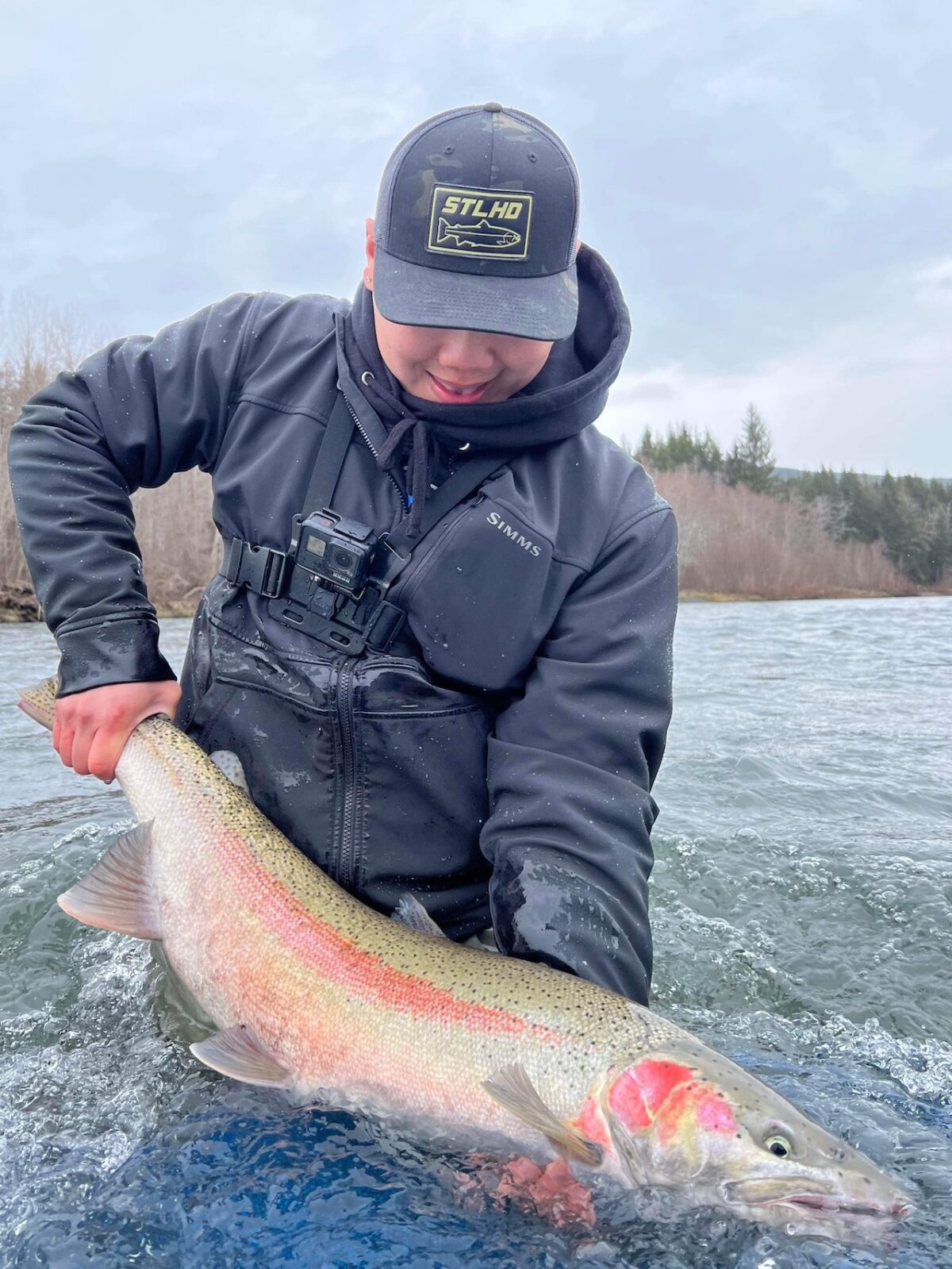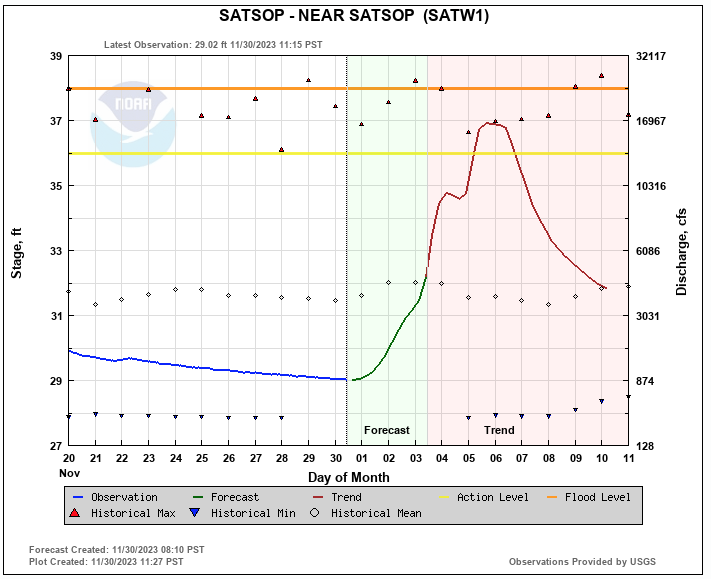
Washington Coast Winter Steelhead Seasons Announced
Just as was previewed earlier this week, there will be more boat angling opportunities on the Washington Coast this winter steelhead season, but the Grays Harbor system will be closed to all fishing as of Friday, December 1 – though perhaps only temporarily as WDFW meets with tribal comanagers to try and come to an agreement about hatchery-directed fisheries on four rivers there.

Don’t push all of your pennies in on that last one, but at least for the time being things have been cleared up on Willapa Bay tributaries on the South Coast and the Hoh and Quillayute watersheds on the North Coast, and plans for Forks getaways can be written in pen instead of pencil.
“With a focus on the long-term decline of coastal steelhead, especially in the Queets and Quinault watersheds, the Region 6 team has designed recreational fishery regulations that support WDFW’s conservation goals while integrating what we’ve heard from the public,” said James Losee, WDFW Coastal Region fish program manager, in an agency press release this afternoon (see bottom).
Forecasts call for 9,096 natives back to the Quillayute – well above the escapement goal of 5,900 fish and just under last year’s actual runsize of 9,230 – 3,389 on the Hoh – roughly 1,000 fish above the goal, though 750 fewer than came back in 2023 – and 4,085 to Willapa. While that last figure is technically 121 fish below the system’s escapement goal (and 850 fewer than last winter), under the statewide steelhead management plan, there’s a sport impact limit of, essentially, 409 mortalities available. All wild steelhead must be released in Washington.
This late fall season-setting process is becoming old hat now in this fourth year of widescale restrictions due to persistent low returns of native steelhead to the Washington Coast – federal overseers are currently mulling whether an ESA listing is warranted – and the fisheries will again be open under selective gear/no bait and single, barbless hook regulations.
For the first time since the 2019-20 winter season, fishing out of a boat will be allowed on the admittedly small Willapa rivers that flow into the bay, as well as on the Hoh from Morgans Crossing down to Oxbow Campground from Sundays through Tuesdays and Oxbow to the mouth from Wednesdays through Saturdays.
That latter one is part of a one-year fishery effectiveness experiment to “determine the wild steelhead impacts from fishing from a floating device to better inform future rule making” according to Losee.
On the Sol Duc, drifters and pontoons will be allowed to work the waters from the state hatchery downstream past Maxfield – last year’s upper boat boundary – to the mouth.
Outside of certain Willapa Bay streams which close February 28, fishing is scheduled to run through March 31. Wild rainbow trout – steelhead less than 20 inches – must be released and there’s a two-steelhead bag limit, which will come in handiest on the Quillayute, Calawah, Bogachiel, Naselle and Willapa Rivers, but strays occur elsewhere and should be removed.
As for Grays Harbor, anglers will be chomping at the bit as WDFW and the Quinault Indian Nation meet so that they can hopefully tap into relatively abundant hatchery winter steelhead and late coho on stretches of the Humptulips, Wynoochee, Satsop and Skookumchuck, which otherwise all close after today, November 30.
WDFW promises a major monitoring effort to better understand the impact angling has on early-returning wild steelhead on those tribs and while agency staff sounded optimistic at Monday’s virtual town hall, there has also been fisheries friction this fall between the parties and a high-ranking staffer essentially acknowledged that holding coho fisheries was directly tied to agreed-to steelhead fisheries, despite deals worked out at salmon-oriented North of Falcon, so it will probably be wise to temper expectations and focus elsewhere as a series of atmospheric rivers push Western Washington’s actual rivers to near flood level over the coming days.

State-managed sections of the Queets and Quinault also close after today, though WDFW said it is also “pursuing agreement with tribal co-managers through signed fishery management plans in these systems.”
Earlier this month, Olympic National Park closed its sections of both systems through the end of next May.
**********
THE FOLLOWING IS WDFW’S PRESS RELEASE
WDFW announces 2023-2024 coastal steelhead season
Department to test fishing from a floating device in some waters
OLYMPIA – Fishery managers with the Washington Department of Fish and Wildlife (WDFW) announced this week regulations for the state’s 2023-2024 coastal steelhead fishing season. Included are special rules allowing fishing from a floating device on two sections of the Hoh River during certain days of the week to help determine impacts to wild steelhead.
“With a focus on the long-term decline of coastal steelhead, especially in the Queets and Quinault watersheds, the Region 6 team has designed recreational fishery regulations that support WDFW’s conservation goals while integrating what we’ve heard from the public,” said James Losee, WDFW Coastal Region fish program manager. “With this in mind, we are implementing a one-year study in the Hoh River to determine the wild steelhead impacts from fishing from a floating device to better inform future rule making.”
Fishing is scheduled to be open from Dec. 1 through March 31 with some opportunities to fish from a floating device. Selective gear rules and single point barbless hooks will be required on all systems open to fishing. These include:
- Quillayute River System
- Hoh River
- Willapa Bay River System (select tributaries will close Feb. 28)
WDFW fishery managers are continuing discussions with Quinault Indian Nation to secure agreements on fishery plans in Grays Harbor rivers and tributaries.
In waters open to fishing, the bag limit is two hatchery steelhead, and anglers must release wild steelhead and rainbow trout. All anglers are advised that additional emergency Fishing Rule Changes could occur throughout the season.
The Quillayute River System will follow similar rules as last year’s emergency regulations with some expanded boat fishing on the Sol Duc River. Fishing from a floating device will be allowed in the mainstem Quillayute, downstream of the concrete pump station at the Sol Duc Hatchery, below the Highway 101 bridge on the Calawah River, and downstream of the mouth of Mill Creek on the Bogachiel River (approximately 3/4 mile above the Bogachiel Hatchery).
In the Hoh River, fishing from a floating device will be allowed Sunday through Tuesday only from the Morgan’s Crossing boat launch downstream to the Washington Department of Natural Resources Hoh Oxbow Campground boat launch, and Wednesday through Saturday only from the Hoh Oxbow boat launch downstream to the Olympic National Park boundary near the mouth.
Fishing from a floating device will also be allowed in rivers that flow into Willapa Bay throughout the scheduled season (Dec. 1 through March 31).
State-managed recreational fishing closes Nov. 30 in the Chehalis, Humptulips, Quinault, and Queets rivers due to chronic low wild steelhead abundance. WDFW is still pursuing agreement with tribal co-managers through signed fishery management plans in these systems.
For more information on the Quinault and Queets fisheries, see the Olympic National Park news release. More on fishing in Olympic National Park can be found on the park’s fishing webpage.
Final fishing regulations followed an extensive public engagement process, which included a two-part virtual town hall series this past fall and several WDFW staff updates to the Fish and Wildlife Commission.
WDFW continues to operate under its Statewide Steelhead Management Plan, which requires the Department to prioritize the sustainability of wild coastal steelhead runs by focusing on healthy levels of abundance, productivity, diversity, and distribution.
For more information about coastal steelhead management, the pre-season planning process, and recordings of prior public meetings, please visit WDFW’s website.
